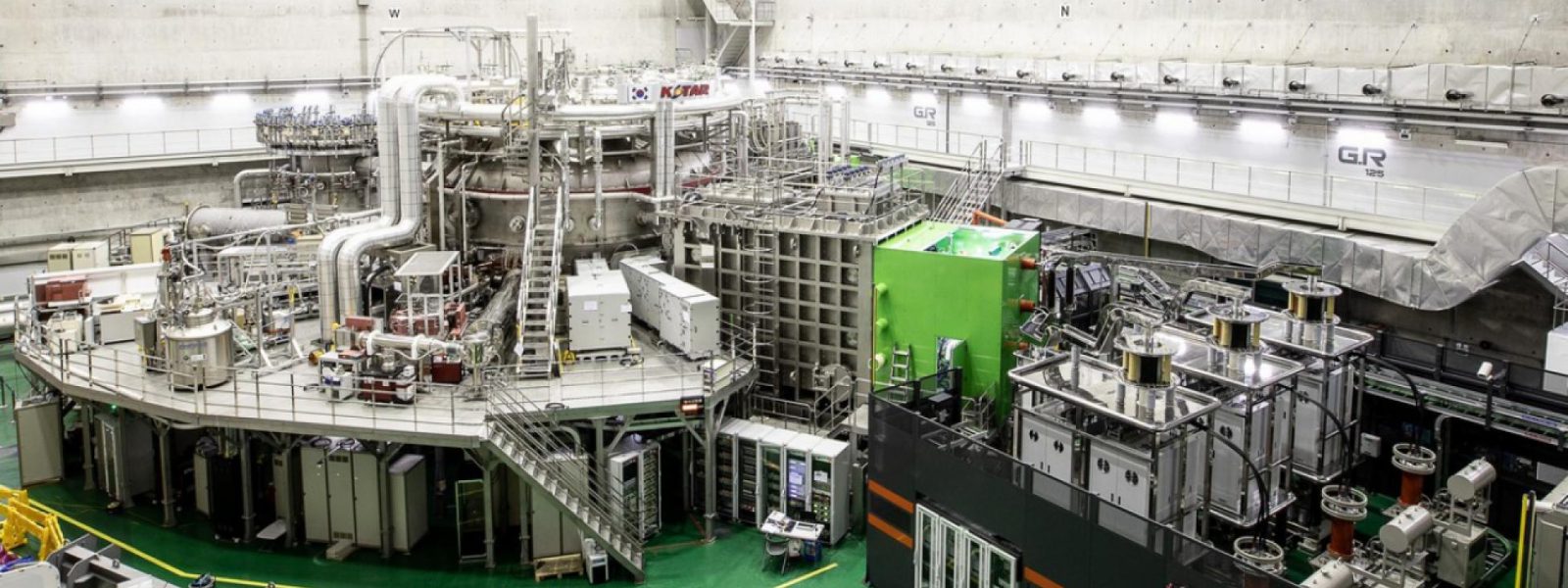–Adriana Ghiozzi for US ITER
First-of-a-kind experiments have begun at the KSTAR tokamak in Daejeon, South Korea, where two new shattered pellet injectors were installed in October and December. The tandem use of shattered pellet injectors installed at opposite sides of the machine is a first for the technology, which was developed and fabricated at the Department of Energy’s Oak Ridge National Laboratory (ORNL). The project is supported by US ITER and ORNL—both funded by DOE Fusion Energy Sciences—and by the Korean National Fusion Research Institute and the ITER Organization. Results from these and future experiments at KSTAR will seek to enhance the understanding of disruption mitigation for ITER plasmas.
“It is the biggest physics and technology challenge for ITER I think,” said Larry Baylor, leader of ORNL’s Fusion Science and Technology group and a key contributor to the development of SPI technology.
A disruption is the result of an instability in a magnetically confined plasma, which, if left unmitigated, can cause a sudden shutdown of the plasma and subsequent release of energy. That energy, in the form of heat or electrical current, can be enough to melt or physically deform the plasma-facing surfaces of the tokamak. ITER’s mitigation strategy is shattered pellet injection.
“I think the key thing that we’ll be looking at in the first experiments on KSTAR is how well the synchronization of the pellets works,” said Baylor. “We’ll be firing them at exactly the same time from these two injectors on opposite sides of the machine and the pellets will be identical, the injection systems are identical. And so we’re curious to see how the arrival times are, how close together they can be.”

KSTAR provides an optimal scenario to study a number of yet unresolved questions for ITER, among them the importance of simultaneous arrival of pellets in the plasma. The two SPIs are installed in ports 180 degrees apart on the torus; upcoming experiments will address the hypothesis that a shorter arrival window, on the order of a few hundred microseconds between pellets, means more effective dissipation of thermal energy.
Shattered pellet injection is precisely what it sounds like: a shotgun shell-sized pellet of solid deuterium, neon or argon is formed in a barrel, accelerated by a burst of high pressure gas, smashed into the side of a curved guide tube, and delivered into the plasma as a relatively uniform spray of material. Experts in SPI have repeatedly demonstrated experimentally that this method can safely dissipate the plasma’s excess thermal energy as light radiation, rather than the potentially harmful heat or electric current.
First installed on the DIII-D tokamak at General Atomics a decade ago, SPI proved its worth to the ITER project, beating out massive gas injection as the baseline system for disruption mitigation on ITER. Further campaigns on the Joint European Torus at the Culham Centre for Fusion Energy have continually demonstrated the efficacy and reliability of SPI, and instilled confidence in the decision of the ITER disruption mitigation team.
“The systems we build today work on the same exact principle as the initial one that was deployed on DIII-D ten years ago,” said Baylor.
As experiments progress, results from KSTAR and other SPI-outfitted tokamaks will be shared with the ITER disruption mitigation task force, an international network of experts who will use advanced modelling techniques to extrapolate the data to ITER-like conditions. Such models are necessary in translating between KSTAR and ITER, as the ITER tokamak will have 40 times the plasma volume, nearly 15 times the plasma current, and a total of 27 injectors.
Collaboration between the ORNL and KSTAR teams requires a great deal of ingenuity. In an effort to minimize trans-Pacific travel, KSTAR engineers shared computer-aided design models of the tokamak with the ORNL team, who worked on finding an injection pathway and other real estate for the SPI hardware, including their cryogenic cooling system and 10-meters-long pellet guide tubes. In February of 2019 a full detail final design review, typically an in-person affair, was conducted via an extended video call.
The team also employed some 21st-century acuity in creating the control system; engineers at ORNL developed software to facilitate pellet production and tested it in the lab on a programmable logic controller (PLC). That code was sent to the team at KSTAR, which, using an identical PLC, was able to implement the program into their control system with very few changes.
These experiments will not only provide abundant scientific data, but also the opportunity for a young generation of scientists and engineers to learn the operational ropes of the cutting-edge SPI technology. An integral part of all three SPI installations, on DIII-D, JET, and now KSTAR, is the development of a workforce that is capable of operating and troubleshooting the pellet injectors in a variety of disruption mitigation scenarios.
US contributions to ITER are sponsored by the U.S. Department of Energy Office of Science and managed by UT-Battelle at Oak Ridge National Laboratory in Tennessee, with contributions by partner labs Princeton Plasma Physics Laboratory and Savannah River National Laboratory. For more information, see https://usiter.org. The Office of Science is the single largest supporter of basic research in the physical sciences in the United States, and is working to address some of the most pressing challenges of our time. For more information, please visit https://science.energy.gov.
